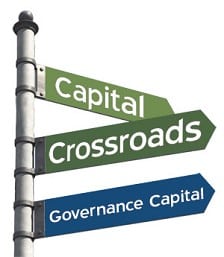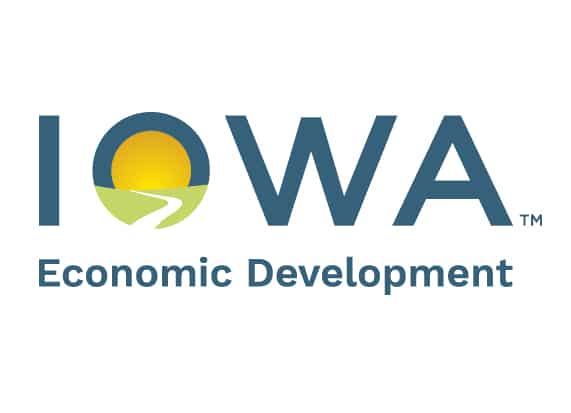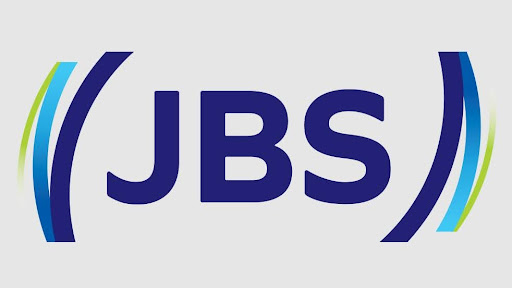Capital Crossroads: Governance Capital
Governance Capital focuses on collaboration, resource sharing

What is Capital Crossroads:
Capital Crossroads is a regional planning effort headed up by leaders in Greater Des Moines and surrounding communities.
What is Governance Capital:
The Governance Capital section of the Capital Crossroads long-term plan looks at forming stronger city-to-city partnerships and finding smart ways to share resources to reduce costs.
Collaboration is key when it comes to the success of the Governance Capital of the Capital Crossroads long-term vision plan. In order to make Central Iowa stronger, the co-chairs said, the committee must form stronger city-to-city partnerships and find smart ways to share resources.
“Our charge is to be more aggressive and systematic to improve services while finding a reduction of costs,” said Gretchen Tegeler, a co-chair of the committee and the executive director of the Taxpayers Association of Central Iowa.
Key elements of the plan include fostering better communication among local government bodies, agencies and departments and consolidating regional resources to form partnerships that can become sustainable over the long term.
Tegeler said there are often “trigger points” that induce groups to merge resources or duties, such as expiring contracts, retiring department heads or purchasing new equipment. The Governance Capital must put together a process to anticipate these points 18 to 24 months in advance so various city and county groups can evaluate opportunities and form partnerships, she said.
The Governance Capital committee is composed of mayors, county supervisors and other local officials from Warren, Polk and Dallas counties; the co-chairs felt it was important to include business leaders on the committee, too.
“We have a good representation of governments, businesses and geographies,” said Bob Andeweg, a committee co-chair and the mayor of Urbandale.
Andeweg said the committee is currently assessing the benefits and likelihood of developing a metro water authority similar to Metro Waste Authority and the Des Moines Metropolitan Wastewater Reclamation Authority, a regional entity that owns and operates facilities throughout the metro area.
“It’s too early to tell if we should model this after (the waste management service),” he said. “We’re still looking at what is working well and why.”
But Greater Des Moines already has a proven track record of successful regional collaborations. The co-chairs listed organizations such as Bravo Greater Des Moines and the Des Moines Area Regional Transit Authority (DART), as well as a host of equipment-sharing programs forged between police and fire departments.
It’s clear the region is willing and good at sharing programs and funds, they said, but it’s also clear that there is always room for improvement.
“For collaboration to be successful, everyone has to gain,” said Tim Moerman, an assistant city manager of Ankeny. Moerman is also heading up the Sustainable Collaboration Work Group, a subcommittee tasked with creating a format to assist and promote future collaboration.
“People want to work together, but we need to make it last,” he said. A way to do that is by enlisting the help of a third-party organization to arrange meetings, facilitate discussion and develop strategies, he said.
“We need someone to develop strategies and hold people accountable,” Moerman said, pointing to the Des Moines Area Community College Business Resources, a group that offers consulting and training services to businesses, nonprofit organizations and government agencies, as an example of an available resource.
Another initiative the committee has undertaken is setting up the Eastern Polk County Collaborative, a second subcommittee composed of school and city officials. This group is reviewing budgets and contracts to find cost-sharing opportunities, Tegeler said, such as sharing a contract with a lawn maintenance company or vehicle repair company and sharing administrative services.
However, even with all of the steps forward the Governance Capital has taken, many challenges lie ahead. Tegeler said the most obvious challenge is the differences in the levels of services offered between cities and counties.
The group also must be mindful of the competition that often arises between cities.
“People make assumptions about others’ motives without even realizing it,” Tegeler said.“It’s scary to give up that perceived control.”
The breakdown
The Governance Capital section of the Capital Crossroads final plan document lays out three subsections. Here is a look at the subsections and what the capital tri-chairs deem to be most important heading into the implementation process.
Communicate and Coordinate
• Expand the Metro Advisory Council (MAC) to additional Capital Crossroads communities. The MAC builds solid relationships among participating governments and elected officials. However, Central Iowa needs a higher-capacity, more broadly representative and holistic planning entity to serve its future needs.
• Optimize local zoning and development ordinances to ensure coordination across Greater Des Moines. The plan points out that Des Moines’ zoning code has not been updated since 1965. But because the city is almost wholly built out, any thought of developing a new ordinance must be considered in a broader regional zoning context. The plan recommends that the region adopt the same family of codes, with local amendments, for structured, mutually supportive regulations.
• Assess the benefits of creating a metro water authority in Greater Des Moines. Bob Andeweg, a Governance Capital co-chair, said the group is looking at Metro Waste Authority, which was a successful way to share resources and costs for solid waste management services. “It’s too early to tell if we should model this after (the waste management service),” Andeweg said. “We’re still looking at what is working well and why.”
Maximize Resources


Advocate













